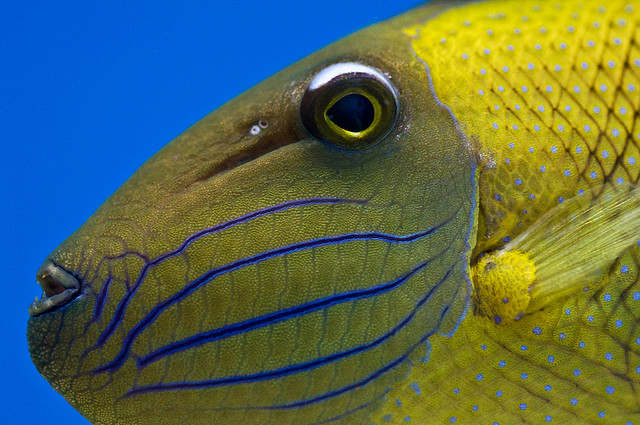
Triggerfishes have a deserved reputation as pugnacious and problematical fishes within aquariums, but the half-dozen species of Xanthichthys offer a peaceful exception to this rule. Because of their smaller size and zooplanktivorous diet, they are a surprisingly amenable choice for larger reef tanks. Their natural diet is reported to be almost entirely comprised of tiny calanoid copepods, meaning they have zero interest in dining on your corals, though smaller crustaceans ought be wary.
Xanthichthys are primarily associated with deeper waters (40-140+ meters), though juveniles can be found as shallow as 5m. Adults are most common along the forereefs of oceanic islands, while juveniles are found in more diverse habitats. These fishes often occur beneath a sharply demarcated line separating waters of different temperature—the thermocline. As an example, X. greenei is found beneath a thermocline of 68-72℉, above which it is 77-82℉. As their preferred temperature is far below that of the typical reef aquarium, Xanthichthys can require a great amount of food to maintain their thermally-increased metabolism.
The precise biogeography of many Xanthichthys species is imperfectly known, with many having large gaps separating known populations. Whether this is an artifact of their deeper, colder-water preferences or is indicative of a true absence is not fully understood. For instance, is X. lineopunctatus to be found in the regions between the many scattered locations it’s known from? Is there a member of the ringens Complex present throughout the Central Pacific? Do the Indian Ocean and Pacific Ocean populations of X. caeruleolineatus maintain any genetic connectivity across their apparent absence in the Coral Triangle?

X. ringens
- Range: Western Atlantic (North Carolina & Bermuda to Brazil)
- Size: 25cm
- Etymology: Latin “gaping”
- ID: Body w/ lines of spots; dorsal/anal fins unmargined
- Aquarium Rarity: Common
- Notes: Juveniles in shallow water, associated with Sargassum
X. lineopunctatus
- Range: Antiequatorial, Indo-West Pacific (S. Africa+Reunion+Mauritius, SW India, NW Australia, Taiwan, Ryukyu+S. Japan,+Izu+Bonin)
- Size: 30cm
- Etymology: Latin “lined-dots”
- ID: Dorsal rows of spots conjoined into short dashes
- Aquarium Rarity: Rare
- Note: X. lima is a synonym, both fishbase and Catalog of Fish mistakenly list it as valid
X. greenei
- Range: Kiritimati, Line Islands, possibly at nearby Phoenix Islands
- Size: 15cm
- Etymology: After mesophotic reef biologist Brian Greene
- ID: Two rows of spots limited to beneath dorsal fin base
- Aquarium Rarity: Rare
- Note: This appears to be a Polynesian sister species to lineopunctatus, though the extent of its range is very poorly understood.
X. auromarginatus
- Range: Widespread Indo-Pacific, absent from Eastern Pacific & Easter Island
- Size: 30cm
- Etymology: Greek “golden-margined”
- ID: Body without crosshatching, fins margined in yellow, male with blue throat
- Aquarium Rarity: Common
https://www.youtube.com/watch?v=HVCnFLEzAqU
X. mento
- Range: Antitropical Pacific (Okinawa, Izu, Wake, Marcus, Midway, Hawaii, Pitcairn, Easter Islands); in Eastern Pacific from San Diego to Columbia and Galapagos Islands.
- Size: 30cm
- Etymology: Latin “chin”
- ID: body w/ crosshatching, male: yellow margins & red tail, female: red margins & yellow tail; body turns golden-yellow in mature specimens
- Aquarium Rarity: Uncommon
- Notes: Large specimens can become somewhat aggressive
X. caeruleolineatus
- Range: Oceanic Islands of the Indian & Pacific Oceans
- Size: 35cm
- Etymology: Latin “blue-lined”
- ID: Blue line delimiting dorsal/ventral halves; dorsum with crosshatching and brown, venter unhatched and grey; taller body
- Aquarium Rarity: Rare
- Note: Restricted to below ~30m at oceanic islands. Unknown from most of West Pacific, which suggests Indian and Pacific populations might be genetically distinct.
Acknowledgements
Photo credit for introductory image: Minh Huynh. Map photo credits: Jeanette Johnson (auromarginatus), John Randall (coeruleolineatus), Aloha Corals (greenei), Hiroshi Senou (lineopunctatus), Woliverjr (mento) unknown (ringens)

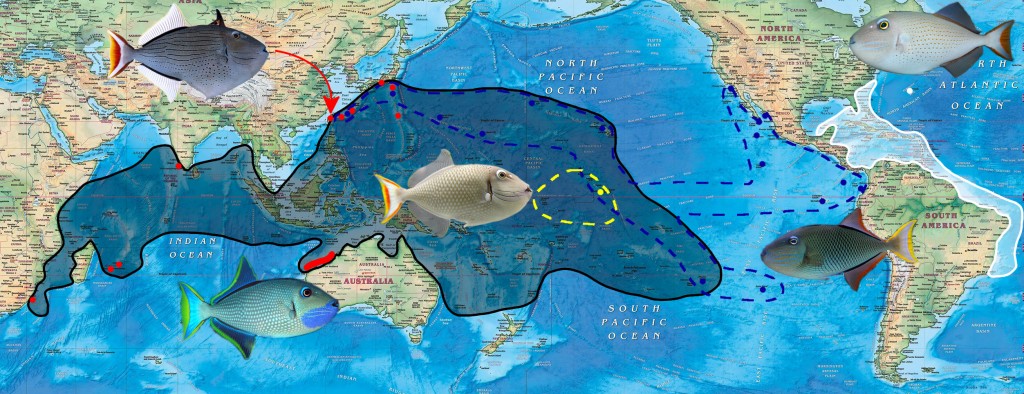

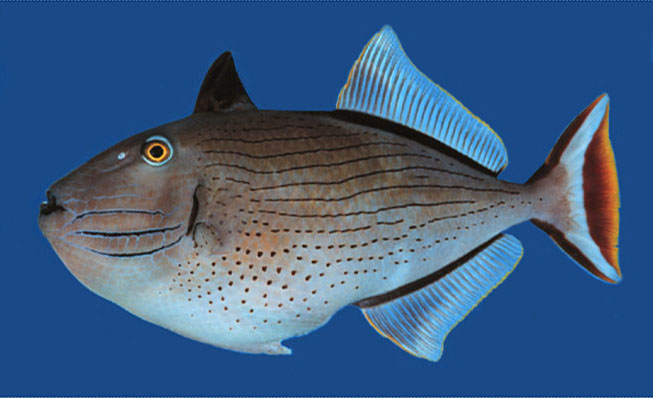
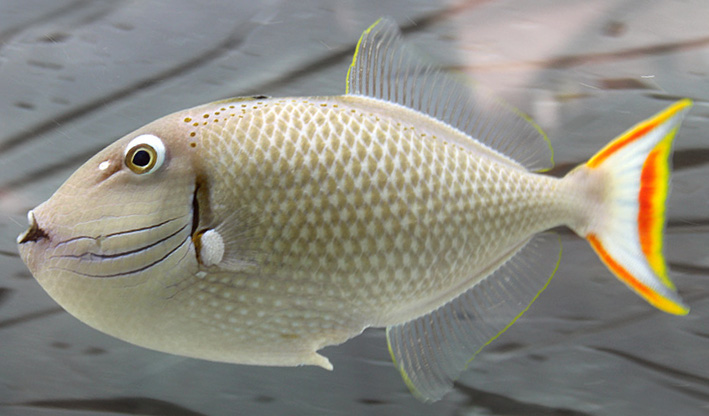
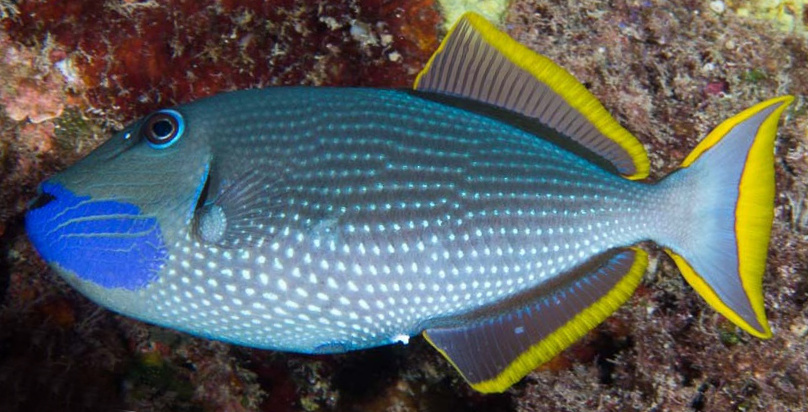
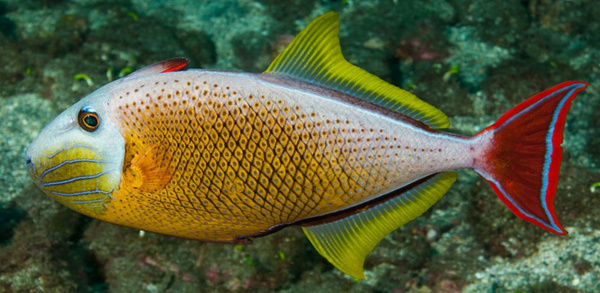
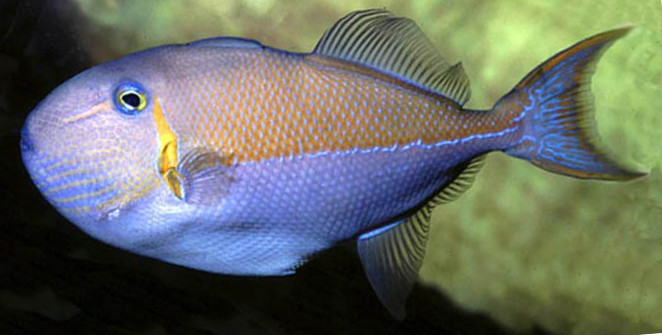
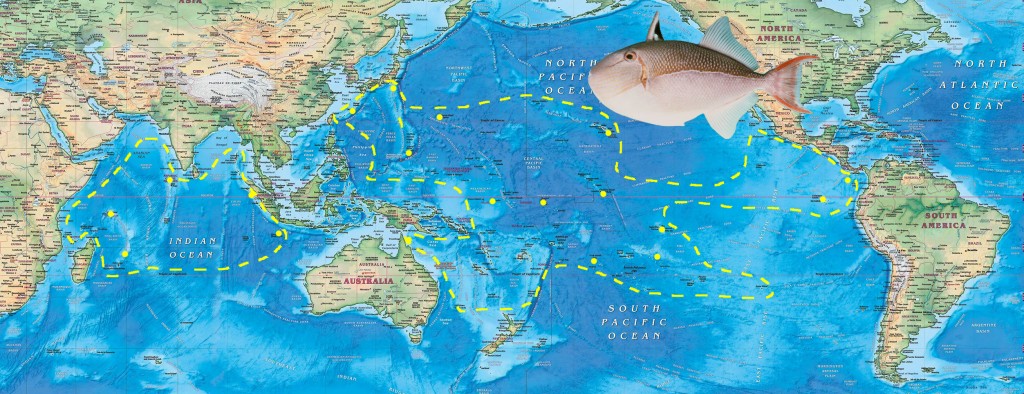









0 Comments